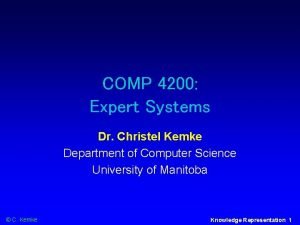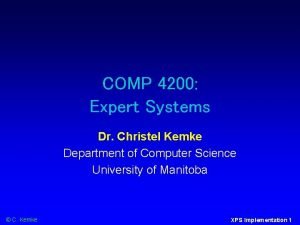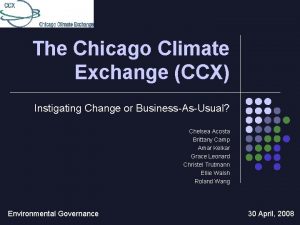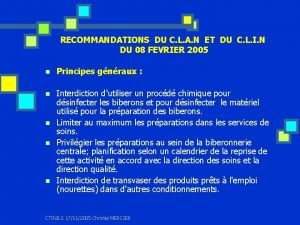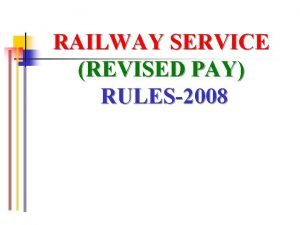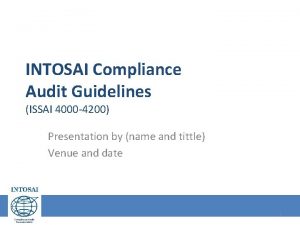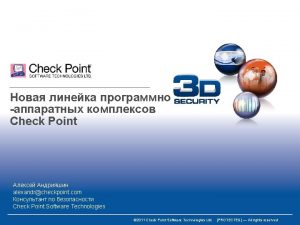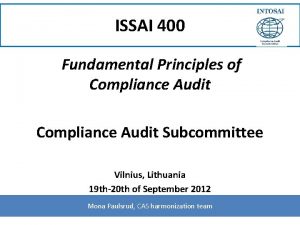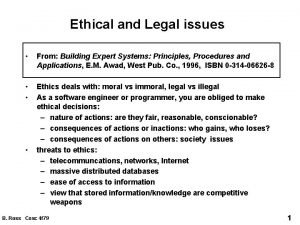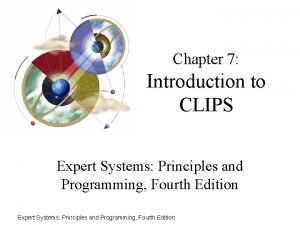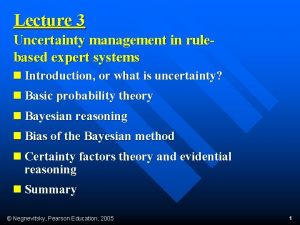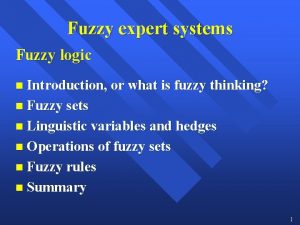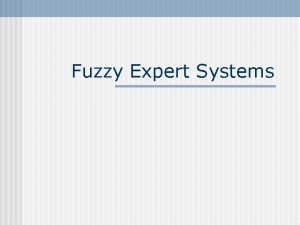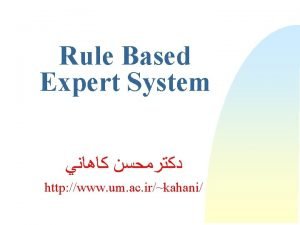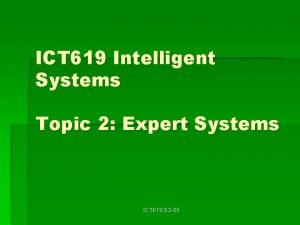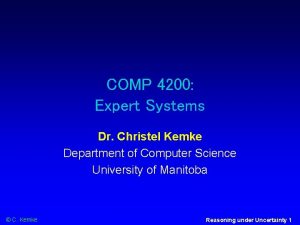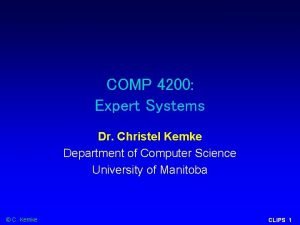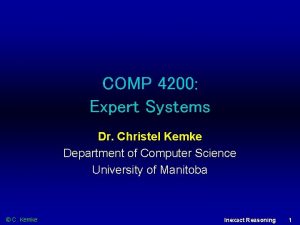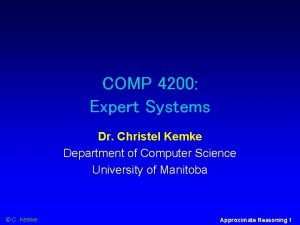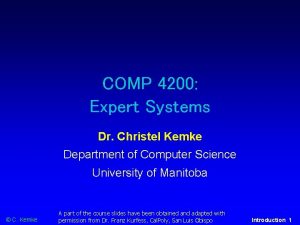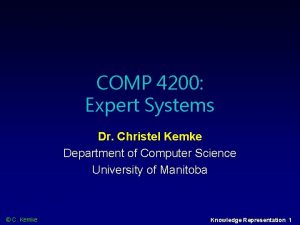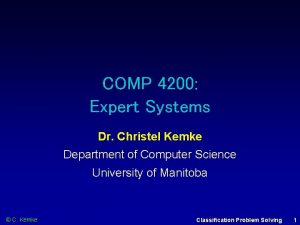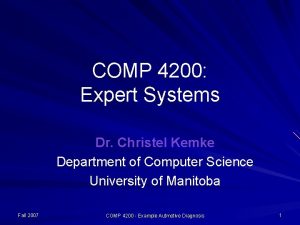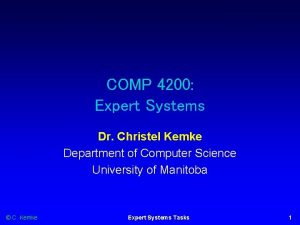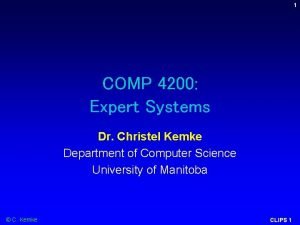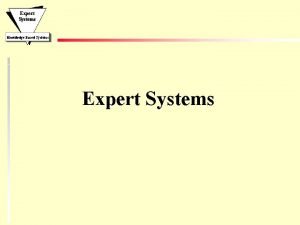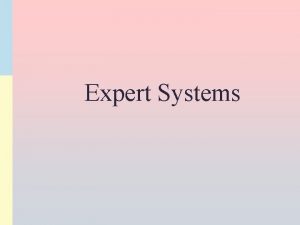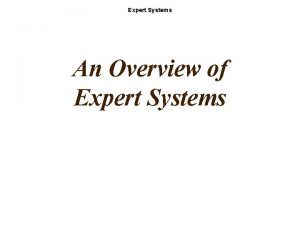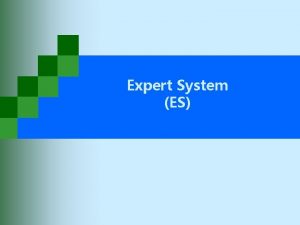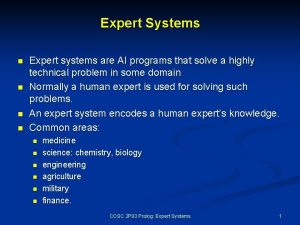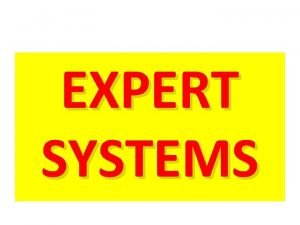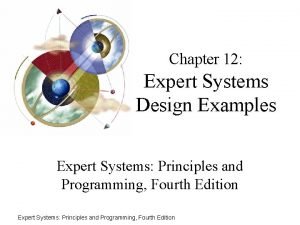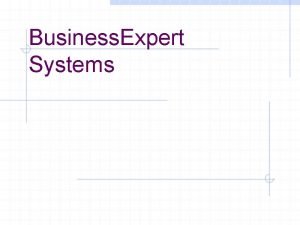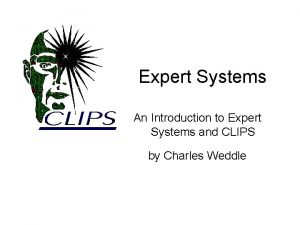COMP 4200 Expert Systems Dr Christel Kemke Department




























- Slides: 28

COMP 4200: Expert Systems Dr. Christel Kemke Department of Computer Science University of Manitoba © C. Kemke Reasoning - Introduction 1

Reasoning in Expert Systems knowledge representation in Expert Systems shallow and deep reasoning forward and backward reasoning alternative inference methods metaknowledge © C. Kemke Reasoning - Introduction 2

Experts and Expert Systems Human Experts achieve high performance because of extensive knowledge concerning their field Generally developed over many years Expert performance depends on expert knowledge! © C. Kemke Reasoning - Introduction 3

Types of Knowledge Representation in XPS can include: conceptual knowledge derivative knowledge conclusions between facts causal connections terminology, domain-specific terms causal model of domain procedural knowledge © C. Kemke guidelines for actions Reasoning - Introduction 4

Knowledge Modeling in XPS Knowledge Modeling Technique in XPS mostly rule-based systems (RBS) rule system models elements of knowledge formulated independently as rules rule set is easy to expand often only limited ‘deep’ knowledge, i. e. no explicit coherent causal or functional model of the domain © C. Kemke Reasoning - Introduction 5

Shallow and Deep Reasoning shallow reasoning also called “experiential reasoning” aims at describing aspects of the world heuristically short inference chains complex rules deep reasoning also called causal reasoning aims at building a model that behaves like the “real thing” long inference chains simple rules that describe cause and effect relationships © C. Kemke Reasoning - Introduction 6

Dilbert on Reasoning 1 © C. Kemke Reasoning - Introduction 7

Dilbert on Reasoning 2 © C. Kemke Reasoning - Introduction 8

Dilbert on Reasoning 3 © C. Kemke Reasoning - Introduction 9

General Technology of XPS Knowledge + Inference core of XPS Most often Rule-Based Systems (RBS) other forms: Neural Networks, Case-Based Reasoning © C. Kemke Reasoning - Introduction 10

Rule-Based Expert Systems Work with a set of facts describing the current world state a set of rules describing the expert knowledge inference mechanisms for combining facts and rules in reasoning © C. Kemke Reasoning - Introduction 11

Inference Engine Knowledge Base (rules) Agenda Working Memory (facts) Knowledge Acquisition Facility Explanation Facility User Interface © C. Kemke Reasoning - Introduction 12

Architecture of Rule-Based XPS 1 Knowledge-Base / Rule-Base stores expert knowledge as “condition-action-rules” (or: ifthen- or premise-consequence-rules) objects or frame structures are often used to represent concepts in the domain of expertise, e. g. “club” in the golf domain. Working Memory stores initial facts and generated facts derived by the inference engine additional parameters like the “degree of trust” in the truth of a fact or a rule ( certainty factors) or probabilistic measurements can be added © C. Kemke Reasoning - Introduction 13

Architecture of Rule-Based XPS 2 Inference Engine matches condition-part of rules against facts stored in Working Memory (pattern matching); rules with satisfied condition are active rules and are placed on the agenda; among the active rules on the agenda, one is selected (see conflict resolution, priorities of rules) as next rule for execution (“firing”) – consequence of rule can add new facts to Working Memory, modify facts, retract facts, and more © C. Kemke Reasoning - Introduction 14

Architecture of Rule-Based XPS 3 Inference Engine + additional components might be necessary for other functions, like calculation of certainty values, determination of priorities of rules and conflict resolution mechanisms, a truth maintenance system (TMS) if reasoning with defaults and beliefs is requested © C. Kemke Reasoning - Introduction 15

Rule-Based Systems - Example ‘Grades’ Rules to determine ‘grade’ 1. study good_grade 2. not_study bad_grade 3. sun_shines go_out 4. go_out not_study 5. stay_home study 6. awful_weather stay_home © C. Kemke Reasoning - Introduction 16

Example ‘Grades’ Rule-Base to determine the ‘grade’: 1. 2. 3. 4. 5. 6. study good_grade not_study bad_grade sun_shines go_out not_study stay_home study awful_weather stay_home Q 1: If the weather is awful, do you get a good or bad grade? Q 2: When do you get a good grade? © C. Kemke Reasoning - Introduction 17

Forward and Backward Reasoning forward reasoning Ø Facts are given. What is the conclusion? A set of known facts is given (in WM); apply rules to derive new facts as conclusions (forward chaining of rules) until you come up with a requested final goal fact. backward reasoning Ø Hypothesis (goal) is given. Is it supported by facts? A hypothesis (goal fact) is given; try to derive it based on a set of given initial facts using sub-goals (backward chaining of rules) until goal is grounded in initial facts. © C. Kemke Reasoning - Introduction 18

Example ‘Grades’ 1. study good_grade 2. not_study bad_grade 3. sun_shines go_out 4. go_out not_study 5. stay_home study 6. awful_weather stay_home forward reasoning given fact: awful_weather backward reasoning hypothesis/goal: good_grade © C. Kemke Reasoning - Introduction rule chain 6, 5, 1 1, 5, 6 19

Example – Grades Working Memory awful weather Agenda Rule 6 Select and apply Rule 6 awful weather stay home Rule 5 Select and apply Rule 5 © C. Kemke Reasoning - Introduction 20

Example – Grades Working Memory awful weather stay home study Agenda Rule 1 Select and apply Rule 1 awful weather stay home study good grade © C. Kemke empty DONE! Reasoning - Introduction 21

Example ‘Police’ – Reasoning Tree Shield AND Pistol Police Badge AND gun forward reasoning: backward reasoning: Police Badge AND Bad Boy Gun OR Shield Revolver Pistol Q: What if only ‘Gun’ is known? © C. Kemke Reasoning - Introduction 22

Example ‘Grades’ – Reasoning Tree © C. Kemke good grade bad grade study not study stay home go out awful weather sun shines Reasoning - Introduction 23

Example ‘Police’ – Reasoning Tree Police Badge AND Bad Boy Gun OR Shield Revolver Pistol Q: What if only ‘Pistol’ is known as ground fact? © C. Kemke Reasoning - Introduction 24

Example ‘Police’ – Reasoning Tree Bad Boy Police Badge AND Gun OR Shield Revolver Pistol Task: Write down the Rule-Base for this example! © C. Kemke Reasoning - Introduction 25

Forward vs. Backward Chaining Forward Chaining Backward Chaining planning, control diagnosis data-driven goal-driven (hypothesis) bottom-up reasoning top-down reasoning find possible conclusions supported by given facts find facts that support a given hypothesis similar to breadth-first search similar to depth-first search antecedents (LHS) control evaluation © C. Kemke consequents (RHS) control evaluation Reasoning - Introduction 26

Alternative Reasoning Methods Theorem Proving Probabilistic Reasoning integrates probabilities into the reasoning process Certainty Factors emphasis on mathematical proofs and correctness, not so much on performance and ease of use Express subjective assessment of truth of fact or rule Fuzzy Reasoning © C. Kemke allows the use of vaguely defined predicates and rules Reasoning - Introduction 27

Metaknowledge deals with “knowledge about knowledge” e. g. reasoning about properties of knowledge representation schemes, or inference mechanisms usually relies on higher order logic © C. Kemke in (first order) predicate logic, quantifiers are applied to variables second-order predicate logic allows the use of quantifiers for function and predicate symbols may result in substantial performance problems CLIPS uses meta-knowledge to define itself, i. e. CLIPS constructs, classes, etc. - in a bootstrapping form Reasoning - Introduction 28
 Kemke net
Kemke net Kemke net
Kemke net Christel daniel
Christel daniel Como prevenir el acoso escolar - wikipedia
Como prevenir el acoso escolar - wikipedia Christel trutmann
Christel trutmann Christel mercier
Christel mercier Christel heckmann
Christel heckmann Michael christel
Michael christel Christel van den eynde
Christel van den eynde 4200 grade pay salary in uttarakhand
4200 grade pay salary in uttarakhand Junos network secure
Junos network secure Issai 4000
Issai 4000 Checkpoint 4200
Checkpoint 4200 Audit and compliance principles
Audit and compliance principles Legal expert systems
Legal expert systems Clips expert system
Clips expert system Uncertainty management in expert systems
Uncertainty management in expert systems Pxdes
Pxdes Fuzzy expert systems
Fuzzy expert systems Fuzzy expert systems
Fuzzy expert systems Rule-based expert systems
Rule-based expert systems Decision support system vs expert system
Decision support system vs expert system Expert systems ict
Expert systems ict Expert system limited
Expert system limited Expert systems: principles and programming, fourth edition
Expert systems: principles and programming, fourth edition Decision support systems and intelligent systems
Decision support systems and intelligent systems Principles of complex systems for systems engineering
Principles of complex systems for systems engineering Embedded systems vs cyber physical systems
Embedded systems vs cyber physical systems Engineering elegant systems: theory of systems engineering
Engineering elegant systems: theory of systems engineering
